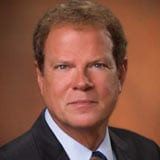As the political rhetoric starts to heat up in this election year, it's a good time to conduct a checkup in the ongoing saga of the Presidential Election cycle and the stock market, suggests Jim Stack, editor of InvesTech Market Analyst.
There has historically been a strong correlation between the stock market and the 4-year Presidential Election cycle. Generally, the first two years after a Presidential Election see very modest stock market gains, and bear markets, or recessions, are most likely to occur in these years.
Currently, we are halfway through Year 2. Based on historical performance, this should be the weakest period of the cycle. But with the S&P 500 (SPX) up about 6% year-to-date, the market is on a much stronger trajectory than usual.
Given the strong market performance year-to-date, what does that mean for the second half? To answer that question, we once again look at the past 18 election cycles to see what actually transpired in Year 2.
We looked at every mid-term election year since 1942, calculating the change in the S&P 500 in the first half of the year and then looked at second half performance from July through December. There are several notable conclusions to be drawn from examining these numbers.
First, bear markets are common during these mid-term election years, but they are far more likely to end than to begin in the months prior to Election Day. Fully one-third (six of the past 18) of the mid-term election years started with a bear market already in full swing.
Also, three bear markets began during the year, but two were very brief. The important point is that nearly all bear markets ended before elections in November. The lone exception was in 1946 when the new bear market extended through yearend.
Second, double-digit gains during the second half of a mid-term election year have been far more common than double-digit losses. In fact, the nine years with double-digit gains outnumber the years with double-digit losses by a 3:1 margin. Any second half losses that exceeded 5% were associated with bear markets.
Third, and most importantly, healthy market gains in the first half of the year, such as we have seen in 2014, did not preclude further gains in the second half. There have been six mid-term election years with gains in the S&P 500 of greater than 5% from January through June.
Two of these six-month periods were followed by losses in the second half (1946 and 1986), but only one turned into a bear market that continued past yearend.
The remaining four instances (1950, 1954, 1958, and 1998) all saw strong market performance in the second half, with three of the four seeing S&P 500 gains in excess of 15% from July through December.
Subscribe to InvesTech Market Analyst here.
More from MoneyShow.com:
Market Cap to GDP: Sign of Caution?


















